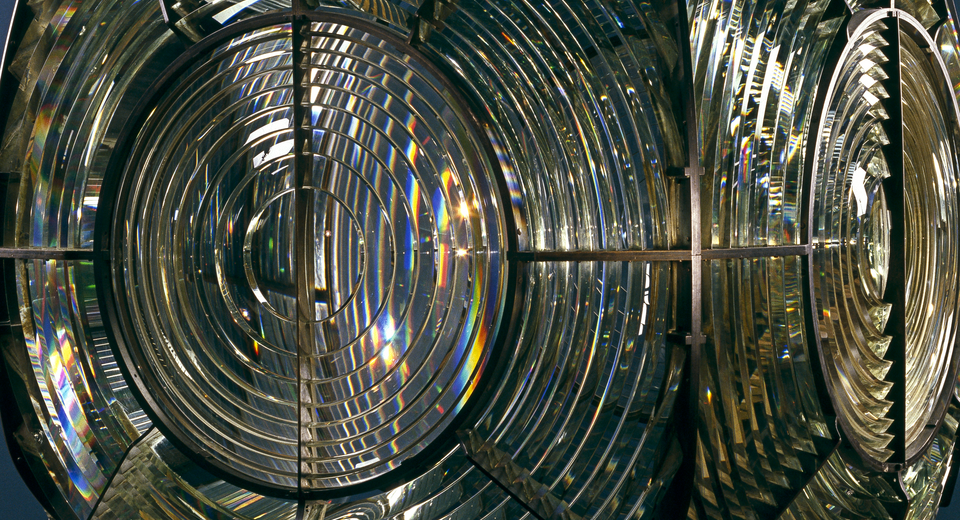Lighthouse optics
Paris
Lighthouses and Beacons Service depot
Installed in 1894 on one of the two lighthouses at Hourtin in Gironde, this large lens rotated at high speed on a mercury tank, producing a so-called "flash" light.
The optics for the Hourtin lighthouse were developed by Barbier, Bénard et Turenne, a major lighthouse manufacturer at the end of the 19th century, which adapted a lens model invented in 1822 by Augustin Fresnel. Made up of concentric rings of glass, this invention made it possible to lighten the weight of the lenses, concentrate the light rays in a single direction and therefore considerably increase the range of the lighthouses.
More than 2.5 metres high, the optics were mounted on a mercury-filled tank that rotated very quickly and without friction. Whereas earlier devices were fixed or varied from minute to minute, the Hourtin optic emitted brief, intense 'flashes' of light, repeated every few seconds. Thanks to the long range of its light signal, the Hourtin lighthouse was what is known as a "first order" lighthouse, with a range of around 60km.
The optic was decommissioned in 1955 when the lighthouse was electrified, and subsequently joined the museum's collections.
Collection highlight
Discover the must-see works at the Musée national de la Marine.

